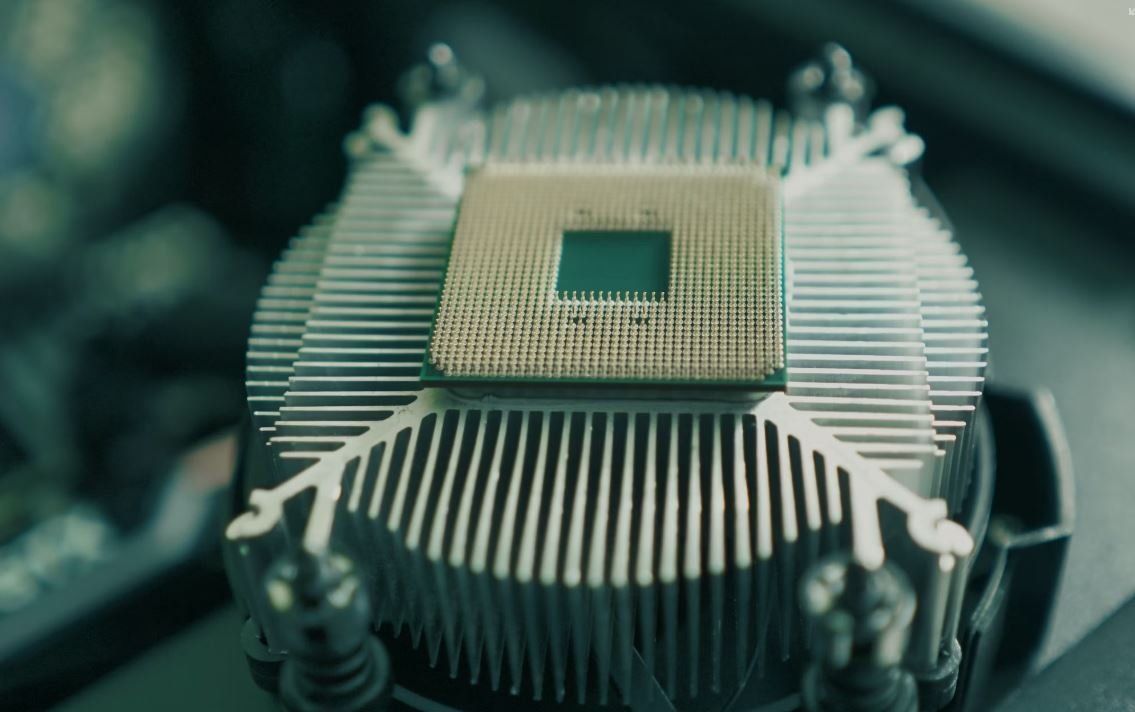How AI Works
Artificial Intelligence (AI) refers to the simulation of human intelligence in machines that are programmed to think and learn like humans. It has become an important part of our daily lives, with applications ranging from voice assistants like Siri and Alexa to autonomous vehicles and healthcare diagnostics.
Key Takeaways:
- AI simulates human intelligence in machines.
- AI has various applications in our daily lives.
- Voice assistants, autonomous vehicles, and healthcare diagnostics are some examples of AI.
How AI Works
AI systems are built using algorithms, mathematical instructions that tell a computer what operations to perform on data. These algorithms allow AI to process and analyze vast amounts of data in order to detect patterns and make predictions or decisions based on that data. *AI algorithms learn from experience, improving their performance over time.*
Types of AI
There are two types of AI: narrow AI and general AI. Narrow AI, also known as weak AI, is designed to perform specific tasks and cannot perform beyond those tasks. General AI, also known as strong AI, refers to machines that have the ability to understand, learn, and apply knowledge across different domains, similar to a human being. However, general AI is still mostly a theoretical concept and has not been fully realized.
Applications of AI
AI is used in various fields and industries, including:
- Healthcare: AI can assist in medical diagnostics, drug discovery, and personalized medicine.
- Transportation: AI is used in autonomous vehicles to navigate and make driving decisions.
- Finance: AI algorithms are applied in fraud detection, risk assessment, and stock trading.
| Field | Application |
|---|---|
| Healthcare | Medical diagnostics |
| Transportation | Autonomous vehicles |
| Finance | Fraud detection |
Table 1: Examples of AI applications in different fields.
Challenges and Ethical Considerations
While AI offers many benefits, there are also challenges and ethical considerations associated with its development and use. Some concerns include:
- Privacy and security: AI systems can collect and analyze large amounts of personal data, raising concerns about privacy and data security.
- Job displacement: AI may automate certain tasks, potentially leading to job displacement in certain industries.
- Biases in AI decisions: AI systems are only as good as the data they are trained on, and if the data is biased, it can result in biased decision-making.
AI in the Future
AI is rapidly advancing and its future looks promising. As technology continues to evolve, AI will likely be integrated into more aspects of our lives. It has the potential to revolutionize industries, improve efficiency, and enhance our overall quality of life.
| Year | AI Development |
|---|---|
| 1956 | First AI conference held at Dartmouth College. |
| 1997 | IBM’s Deep Blue defeated world chess champion Garry Kasparov. |
| 2011 | IBM’s Watson won against human contestants on the quiz show Jeopardy! |
Table 2: Milestones in the development of AI.
Conclusion
Artificial Intelligence is revolutionizing the way we live and work. Its applications are diverse and its potential is immense. As AI continues to advance, it is important to address the challenges and ethical considerations associated with its development and deployment.

Common Misconceptions
When it comes to understanding how AI works, there are several common misconceptions that people often have. By dispelling these misconceptions, we can gain a clearer understanding of the capabilities and limitations of AI.
Misconception 1: AI is a human-like intelligence
- AI does not possess consciousness or emotions like humans.
- AI’s decision-making is based on algorithms, not personal experiences or preferences.
- AI lacks common sense and intuitive understanding of the world.
Contrary to popular belief, AI is not an actual human-like intelligence. It is a set of sophisticated algorithms that analyze data and perform specific tasks, based on patterns and rules programmed by human developers.
Misconception 2: AI will take over all human jobs
- AI is designed to augment human capabilities, not replace them entirely.
- Jobs that require creativity, empathy, and critical thinking are less likely to be automated by AI.
- AI will create new job opportunities in fields like data science and AI research.
While AI has the potential to automate repetitive tasks and improve efficiency, it is unlikely to completely replace all human jobs. AI technology is most effective when used in collaboration with human workers to enhance productivity and decision-making processes.
Misconception 3: AI is infallible and error-free
- AI systems can be biased and produce inaccurate results if trained on biased datasets.
- AI algorithms can make mistakes or fail to generalize in certain situations.
- AI requires continuous monitoring and improvement to minimize errors and improve performance.
AI systems are not inherently error-free. Their performance depends on the quality of the data they are trained on, the accuracy of the algorithms used, and the expertise of the developers. Regular monitoring and refinement are necessary to ensure AI systems function accurately and ethically.
Misconception 4: AI is only relevant in advanced technological applications
- AI is increasingly being used in various industries, such as healthcare, finance, and transportation.
- AI-powered chatbots and virtual assistants are becoming common in customer service.
- AI can help improve decision-making and efficiency in everyday tasks, such as route optimization or spam filtering.
AI is not limited to advanced technological applications. Its applications are expanding across a wide range of industries and everyday life. From personalized recommendations on streaming platforms to fraud detection in banking, AI is playing a significant role in many aspects of our daily lives.
Misconception 5: AI will become self-aware and take over the world
- AI does not possess consciousness or the ability to take over the world.
- Speculations about superintelligent AI are largely based on science fiction, not scientific reality.
- Ethical guidelines and safety measures are implemented to prevent misuse or harmful outcomes in AI development.
Contrary to popular depictions in movies, AI does not possess the consciousness or self-awareness necessary to take over the world. Researchers and developers actively work on creating ethical guidelines and safety measures to ensure responsible AI development, minimizing any potential risks or harmful outcomes.

The Basic Elements of Artificial Intelligence
Artificial intelligence (AI) is a field that is revolutionizing various industries with its ability to emulate human intelligence. AI comprises several key elements that work together to mimic human cognitive functions. The following table illustrates the fundamental components of AI and their functions:
| Element | Description |
|---|---|
| Machine Learning | Algorithms enable machines to learn from data and improve algorithms over time. |
| Natural Language Processing | Enables machines to understand and process human language, both written and spoken. |
| Computer Vision | Empowers machines to perceive and interpret visual information from images or videos. |
| Expert Systems | Utilizes knowledge and rules to solve complex problems or provide expert advice. |
| Robotics | Combines AI with physical devices to perform tasks in the physical world. |
| Speech Recognition | Enables machines to convert spoken words into text and perform actions based on the input. |
| Neural Networks | Simulates the structure and behavior of the human brain to process and learn from data. |
| Data Mining | Extracts valuable patterns and insights from large datasets using AI algorithms. |
| Cognitive Computing | Aims to create machines that can think, reason, and make decisions like a human. |
| Autonomous Vehicles | AI algorithms enable vehicles to navigate and make decisions without human intervention. |
The Evolution of AI Systems
Artificial intelligence has undergone remarkable transformations over the years. The table below outlines the timeline of AI systems, demonstrating how this field has progressed:
| Period | Classification | Notable Systems |
|---|---|---|
| 1950s-1960s | Early AI | Logic Theorist, General Problem Solver |
| 1980s-1990s | Expert Systems | MYCIN, DENDRAL, PROSPECTOR |
| 1997 | Chess AI | Deep Blue defeats Garry Kasparov |
| 2011 | IBM Watson | Wins Jeopardy! against human champions |
| 2016 | Machine Learning | AlphaGo beats world champion Lee Sedol in Go |
| 2017 | Chatbots | Google Duplex, Microsoft Xiaoice |
| 2020 | GPT-3 | OpenAI’s massive language model with billions of parameters |
Applications of Artificial Intelligence
Artificial intelligence has found numerous practical applications across various domains. The following table showcases real-world applications of AI and the sectors they revolutionize:
| Application | Sector |
|---|---|
| Smart Assistants | Consumer Electronics |
| Fraud Detection | Banking and Finance |
| Recommendation Systems | E-commerce |
| Medical Diagnosis | Healthcare |
| Autonomous Vehicles | Transportation |
| Virtual Assistants | Customer Service |
| Predictive Maintenance | Manufacturing |
| Image Recognition | Security |
| Speech Synthesis | Entertainment |
| Language Translation | Communications |
The Impact of AI on Employment
The integration of AI technologies in the workplace has raised concerns about the future of employment. The table below highlights the impact of AI on various job sectors:
| Sector | Impact |
|---|---|
| Manufacturing | Automation reduces the need for manual labor, but new jobs in AI engineering emerge. |
| Transportation | Autonomous vehicles could replace certain driving jobs but require AI specialists for maintenance. |
| Customer Service | AI-powered chatbots and virtual assistants supplement human representatives. |
| Healthcare | AI aids in diagnosis and treatment, supporting healthcare professionals rather than replacing them. |
| Finance | AI automates certain tasks, creating a shift towards more strategic roles. |
Challenges in Developing AI Systems
While AI holds immense potential, its development is not without challenges. The table below outlines some of the obstacles faced in creating advanced AI systems:
| Challenge | Description |
|---|---|
| Data Quality | Adequate and high-quality data is essential for training accurate AI models. |
| Interpretability | AI algorithms often lack transparency, making their decision-making process difficult to understand. |
| Ethics and Bias | Ensuring AI systems are unbiased and make ethical decisions remains a significant challenge. |
| Security | The vulnerability of AI systems to cyberattacks and malicious manipulations raises security concerns. |
| Regulatory Frameworks | Developing appropriate regulations to govern AI technologies is a complex task. |
The Future of AI
The rapid advancement of AI continues to reshape the world we live in. The table below presents some of the anticipated developments and possibilities for the future:
| Anticipated Development | Description |
|---|---|
| AI in Education | AI could personalize education, adapting to individual learning styles and providing tailored feedback. |
| AI in Space Exploration | AI systems might aid in analyzing vast amounts of space data and improve navigation in space missions. |
| Augmented Creativity | AI tools can assist artists, writers, and musicians by generating novel ideas and enhancing creative processes. |
| Healthcare Breakthroughs | AI could lead to improved disease detection, personalized treatments, and more accurate diagnoses. |
| Ethical AI Development | Increasing focus on developing AI systems that operate ethically and responsibly. |
The Impact of AI on Society
The influence of AI reaches beyond specific sectors, affecting society as a whole. The table below highlights some of the societal impacts of AI:
| Impact | Description |
|---|---|
| Job Displacement | AI’s automation potential may disrupt various industries and change the nature of work for many individuals. |
| Improved Efficiency | AI-powered systems streamline processes, reducing costs, and improving productivity. |
| Enhanced Decision-Making | AI can process vast amounts of data quickly, providing valuable insights for informed decision-making. |
| Ethical Considerations | Awareness of potential biases and moral implications of AI systems is crucial for responsible implementation. |
| Technological Divide | Access to AI technologies could potentially widen the gap between tech-savvy individuals and those who lack accessibility. |
As AI systems continue to advance and permeate various aspects of society, it is crucial to prioritize ethical development, consider the impact on employment, and address the challenges associated with this transformative technology. Exciting possibilities lie ahead as AI continues to shape our future.
Frequently Asked Questions
How does AI work?
What is AI?
What are the different types of AI?
What is Narrow AI?
What is General AI?
What are the major components of AI systems?
What are AI algorithms?
What is machine learning?
How are AI systems trained?
What is supervised learning?
What is unsupervised learning?
What are the ethical considerations in AI?
What is algorithmic bias?
Can AI replace human jobs?
What is the impact of AI on employment?




